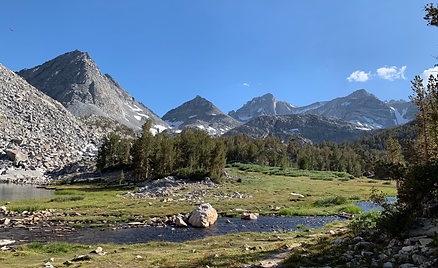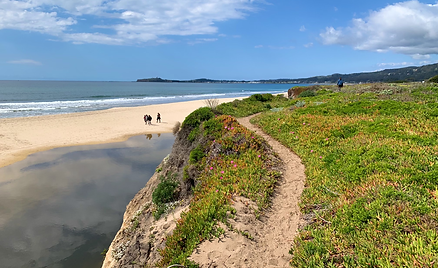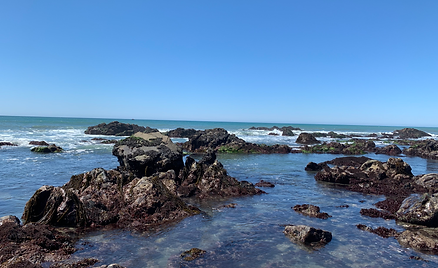Projects
Current Projects

Clinical Geography
This study explores the revelatory fusion between geographic location and the experience of psychiatric symptoms. The cross-sectional approach allows for simultaneously examining the prevalence of psychiatric conditions across different geographic regions, providing insights into potential geographic disparities. The main objective is to examine the nuances of self-reported psychiatric symptoms and geographic factors (e.g., urban vs. rural, socioeconomic status). Additionally, we seek to consider how people express their relationship to a particular ecosystem and assess if the quality of the relationship to a geographic area affects people’s perceptions of mental health.
Project leader: Maya Sikora and Irene Fueyo-Gomez

Microanalytic Study
This study aims to investigate the claim that one’s relationship to the natural environment functions like a psychological, object-relation association, more akin to one’s relationship with a family member or other significant person. This study will examine behavioral differences associated with person-specific self-disclosure and environment-specific self-disclosure through a microanalytic perspective, applying time-series statistical methodology to illustrate the self-contingency patterns that characterize each communicative process. Specifically, the study will utilize interviews and second-by-second coding of different behavioral modalities. This analytic approach would enable a comparison of the two self-contingency modes in quantitative terms, powered by a probability explication. Furthermore, the study intends to conduct a secondary measure analysis to understand the verbal interpretation of one's relationship to the natural environment. This work is important because it would allow for an otherwise largely qualitatively-backed thesis to be quantitatively tested via rigorous behavioral methodology. Furthermore, this study would align strongly with the larger goals of the Lab, which is to effectively understand how humans relate to their ecosystems.
Project leader: Katherine Mckane & Joe Zhao

Nature Walk/City Walk
This study explores how people who are blind experience natural versus urban environments, focusing on physiological responses and mental well-being. Although prior research consistently shows that time in nature reduces stress and enhances mood and cognitive functioning, these findings come almost entirely from studies with sighted participants. By centering individuals with visual impairments, this study investigates how the absence or reduction of visual input shapes the restorative processes typically attributed to natural environments.
Project leader: Jake Siegal

Natural Disasters
Our research explores the nuanced psychological impacts of disasters by examining the experiences of Bystanders, Eyewitnesses, and Survivors, aiming to discern how proximity to disasters influences an individual’s coping strategies and perceptions of the future. We specifically investigate the variations in language use among these groups—Bystanders who learn about the events through news, Eyewitnesses who know a victim, and Survivors who are directly affected—to understand how differing levels of disaster exposure affect their psychological coping and perceptions of future risks associated with climate change. Using Linguistic Inquiry and Word Count (LIWC), our research seeks to amplify the authentic narratives of those who experience disasters, whether vicariously or directly, and consider their nuanced experience in supporting recommendations for design intervention, climate action, and advocacy.
Project leader: Leandra Yu

Religion and Environmental Stewardship
The Religion and Environment Study is correlating various religious groups' religiosity with their pro-environmental attitudes and actions in order to determine which types of religious beliefs are related to pro-environmental attitudes and actions. The research is both quantitative and qualitative in nature in order to analyze statistical data as well as themes that might arise between religious groups. We hope to provide a better grasp on which lines of religiosity have environmental implications.
Project leader: Arabella Crites

Nature Stories
An ongoing collection of people’s personal experiences with the outside natural environment. Click here to read Nature Stories, or submit your own story.
Project leader: Dr. Susan Bodnar

Child Drawings
Project leader: Danny DeBonis

Soccer and Acculturation
This study aims to investigate the impact of participation in soccer on the acculturation process and mental well-being of Chinese international students enrolled in colleges within the United States. Specifically, it examines changes in depression, anxiety, and perceived stress levels, along with the types of acculturation strategies these students adopt.
Project leader: Zili Lan
Past Projects

Parenting Practices and Self-Regulation in Iranian-American Families
When considering what is scientifically known about Iranians along with the circumstances Iranian-Americans come from, it can be hypothesized that Iranian-Americans may be coming from backgrounds of intergenerational abuse and emotion dysregulation, in addition to forced migration from war and oppression that further places them at-risk for emotion dysregulation, negative parenting, and repeating maladaptive cycles (LeBrun et al., 2015; Nickerson et al., 2015). Currently, Iranian-Americans are coping with the ongoing Women Life Freedom movement and increased anti-Middle Eastern sentiment. Thus, the community may be more vulnerable than ever, and the lack of scientific representation of the community may be especially detrimental at this time. In light of this, and in order to increase representation and advance culturally-responsive approaches to intervention, this study sought to examine parenting practices and psychosocial outcomes in Iranian-American families, with a particular focus on investigating emotion dysregulation and intergenerational patterns of childhood experiences of emotional abuse and neglect.
Project leader: Sarina Alavi

Amazon Project
Using an exploratory, qualitative approach, we conducted semi-structured interviews with consenting adults from communities along the Puinahua River in the Amazon. Communities were only accessible by boat, and mental health professionals joined the medical team of the Forth Hope, a mobile boat clinic that provides free primary health services along several rivers of the Peruvian Amazon Basin. Data collection took place during four expeditions (April through July 2021), and we sought to answer the questions "Is there a parallel between how people relate to nature and how people relate to family members?" and "Can the relationship with nature be understood as another object relationship?".
Project Leader: Paula Aljovin

Interpreting Human Relationship to their Ecosystems
One’s relationship to the physical environment plays a constitutive role in psychological development. It is a fundamental but often unacknowledged component of one’s lived experience. Therefore, one’s reaction to environmental and climatic changes impacts psychological health. A previous study found that people related to the environment in a manner that resembled object relationships; internalized constructs that guide and determine behavior. This study examines whether the types of neighborhoods in which one lived during childhood, adolescence, and young adulthood influences nature connectedness. We found that the neighborhood in which one lived in early childhood was most strongly correlated to environmental connectedness.
Project leader: Lab-wide manuscript

Firearm Injury Prevention
With firearm mortality at an all-time high, we are passionate about investigating factors within environments-natural environment, communities, homes, or schools-that can be targeted for the prevention of gun violence perpetration.
Project leader: Sarina Alavi

Socioeconomic Status and the Environment
Socioeconomic factors contribute to climate change-related mental health disparities, and specific policy-focused solutions can be taken to remedy these systemic inequalities, such as strengthening community infrastructure. Our work in this area understands how
one’s socioeconomic status influences one's perception of and relationship with their environment. This project utilizes empirical and theoretical frameworks to highlight the true impact of systemic barriers on well-being.
Project leader: Paritosh Joshi

Climate Event Snap Surveys
This project is meant to understand how people react to and cope with the effects of extreme climate events through an online survey by collecting in-the-moment data from those who experienced the occurrences. So far, snap surveys have been sent out for the June 7 wildfire event and for the floods that took place in Vermont earlier this year. The Lab hopes to form a working group to gather and analyze surveys from climate disasters in the future.
Project leaders: Dr. Susan Bodnar and Paritosh Joshi

Psychology and the Environment
As climate change confronts our society psychological researchers look to document its impact on mental health. Our study investigates the role a particular ecosystem plays in psychological organization by asking people to conceptualize their relationship to the environment. Our team believes that an analysis of recurrent linguistic phrases will demonstrate patterns between participant's ecosystems and important childhood relationships.
Project leader: Dr. Susan Bodnar

Family Trauma and the Environment
The environment can be a place where one heals from family trauma. It can also play a protective factor. Our research in this area highlights how it is that adverse childhood experiences can be mitigated and transcended through a connection to the natural world.
Project leader: Sarina Alavi

Race and Culture
There are many things that figure into our understanding of the world “culture”. From where we grew up to what language we speak to our religions and ethnic backgrounds. Each of these things makes up one facet of what we term “culture”. Moreover these things define how we think about ourselves, other people and the world around us. Our languages define how we think and understand ideas and emotions. Our stories define how we understand ourselves. Our religions define how we think about our past, future, and beyond. The Race and Culture team seeks to understand how those same factors define how we think about and interact with the natural world. Further, we seek not just to understand culturally defined views of the environment, but how those views may affect communication about the environment and environmental stewardship.
One would not speak Norwegian to a Zulu man and expect him to fully understand. Similarly one could not put a mime in front of that same man and expect him to understand the signs and signals being made. One could not even play music and expect that man to understand its meaning. All of these things, that are defined by culture, cannot be shared without first learning to communicate. Similarly, ideas and information of environmental justice cannot be shared without learning how to communicate across cultural barriers and differences.
Our goal is to understand those cultural barriers and differences and so to facilitate communication between cultural groups and across populations.
Project leader: Christina Patio and Sarina Alavi

Attachment and the Prison Environment
Research in the field of ecopsychology has begun to study people’s attachment to place and their environment. However, there is a major gap in the literature on place attachment when it comes to the prison environment. We hope to begin filling this gap by studying the attachment to prison in previously incarcerated persons.
Our study will recruit previously incarcerated persons by distributing flyers, word-of-mouth, and snowballing effects in organizations designed to provide services for this population. With recruited participants who provide informed consent, we will conduct 45-minute one-on-one interviews via Zoom. During these interviews, we plan to ask broad, open-ended questions based on the Place Attachment Survey and Attachment to Place Survey to collect data on each person’s attachment to the prison and their current place (Raymond et al., 2010). Additional questions will be asked to gain a better understanding of how participants feel the different aspects of place attachment (i.e. sense of social belonging, longing for return, etc.) impact their current life (Buttimer et al., 1980; Proshansky et al., 2010).
This qualitative data will then be coded (using NVivo) for recurring themes within and between each interview. These themes will then be reviewed to discover additional gaps in the literature. This study serves to better understand the nuances of the attachment previously incarcerated persons have to the prison environment.
Project leader: Sarah Schmidt

Project leader: Ray Chen
Age and the Environment

Nature and Trauma
Trauma is defined as a distressing event causing intense fear, helplessness, dissociation, confusion, or disruptive emotions, with lasting negative impacts on attitudes, behavior, and functioning. Globally, Post-Traumatic Stress Disorder (PTSD) has a lifetime prevalence of 1.3%-12.2%, making it imperative empirically explore which therapeutic interventions maximize the benefits of treating PTSD for specific patient populations. There are various therapies that are effective in the treatment of PTSD, however, these therapies report conflicting recommendations based on varied trauma types, population characteristics, and when the trauma took place. Exposure to natural environments has shown promising therapeutic potential in improving stress recovery and reducing symptoms of PTSD in individuals with a history of trauma. In this context, this project aims to explore link between the experience of potentially traumatic events and PTSD symptomatology, and assess the role played by nature in this relationship. Specifically, it seeks to analyze the role played by an individual sense of connectedness to nature as well as direct, geographical exposure to natural and green spaces.
Project leader: Sneha Jindal

Gender and the Environment
Since the days of the initial civilizations of humankind, the term “Mother Nature” has been utilized to reference the natural surroundings, and the use of this term across time shows how treatment towards "women and nature" oscillates "...from benevolent protection to utilization and control" (Bloodhart & Swim, 2010). Ecofeminism, which argues that the "hegemonic systems of power and oppression" resulting in "domination of men over women" and "...domination of people over the environment,” demonstrates how these viewpoints about ecosystems facilitate environmental degradation (Bloodhart & Swim, 2010). This is especially noteworthy when considering how men and women interact with the environment, notably because fears around vulnerability may play an inhibiting role in outdoor or recreational space usage among women and illuminates how hegemonic masculinity is perpetuated and maintained (Wesely & Gaarder, 2004).
In light of these revelations around the disproportionate feminization of nature and discrepancies in orientation towards the environment, this study is intended to understand the role that one’s gender plays in the conceptualization, perception, and treatment of their surroundings. In order to assess disparities in pro-environmental actions and differences in conceptualization and perception of nature, we will be looking at how gender correlates with feelings of connectedness to nature as well as how gender correlates with climate-saving actions.
Project leader: Amber Rey

Religion and the Environment
This project aims to investigate the relationship between religious affiliation and connectedness to nature.
Project leader: Sarah Schmidt
Awards
The Amazon project, spearheaded by Paula Aljovin, was awarded three Teachers College, Columbia University Psychology in Education Integrative Project Awards. Paula's original qualitative study, "Mental Health Needs and Strengths among Remote Amazonian Communities" also won 1st place award for best student research poster at the Teachers College Academic Festival.
Ray Chen was awarded the Matilda Levy Paper Award for his Integrative Project Paper: Fatalism and Optimism: Young and Older Perspectives on the Human-Nature Relationship. The Matilda Levy Paper Award on Environmental Sustainability annually honors the best paper written by a student at Teachers College.